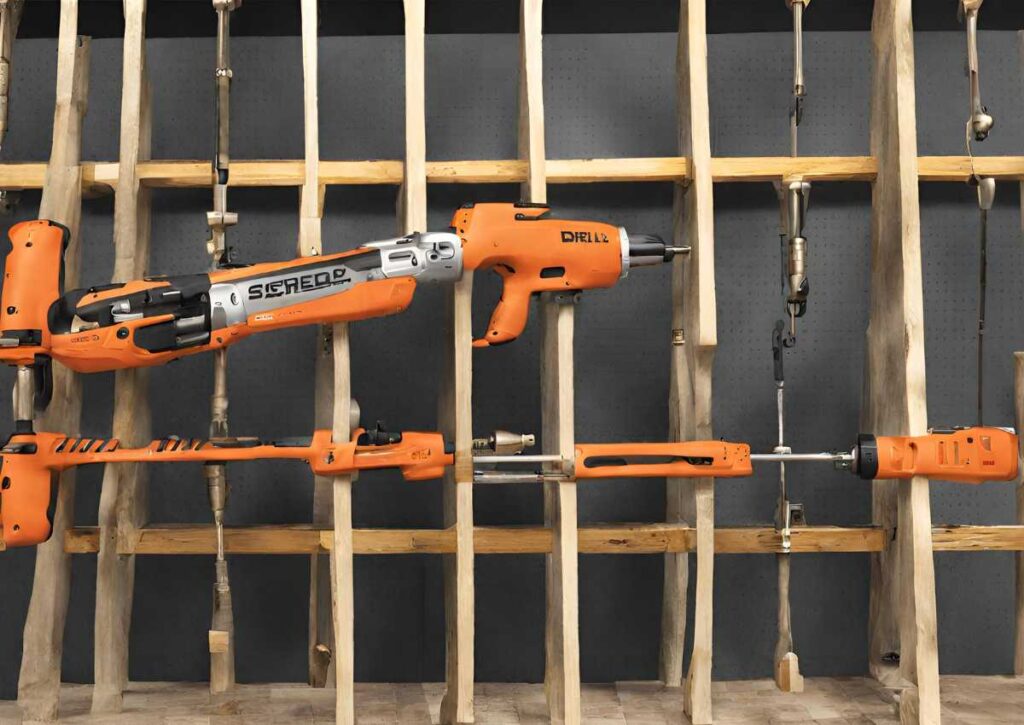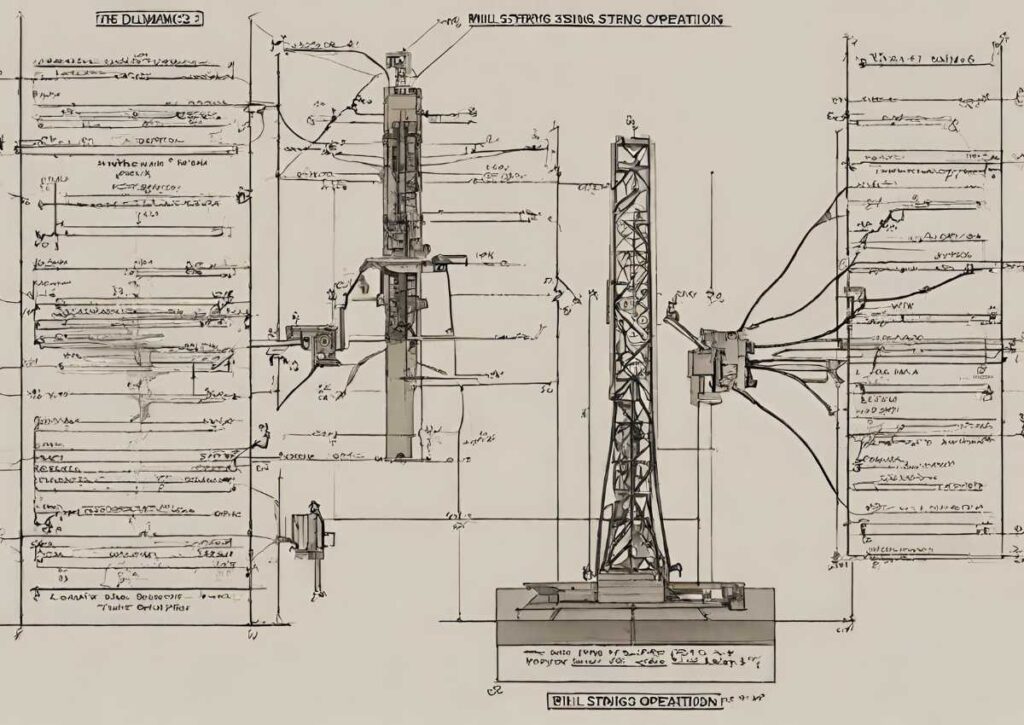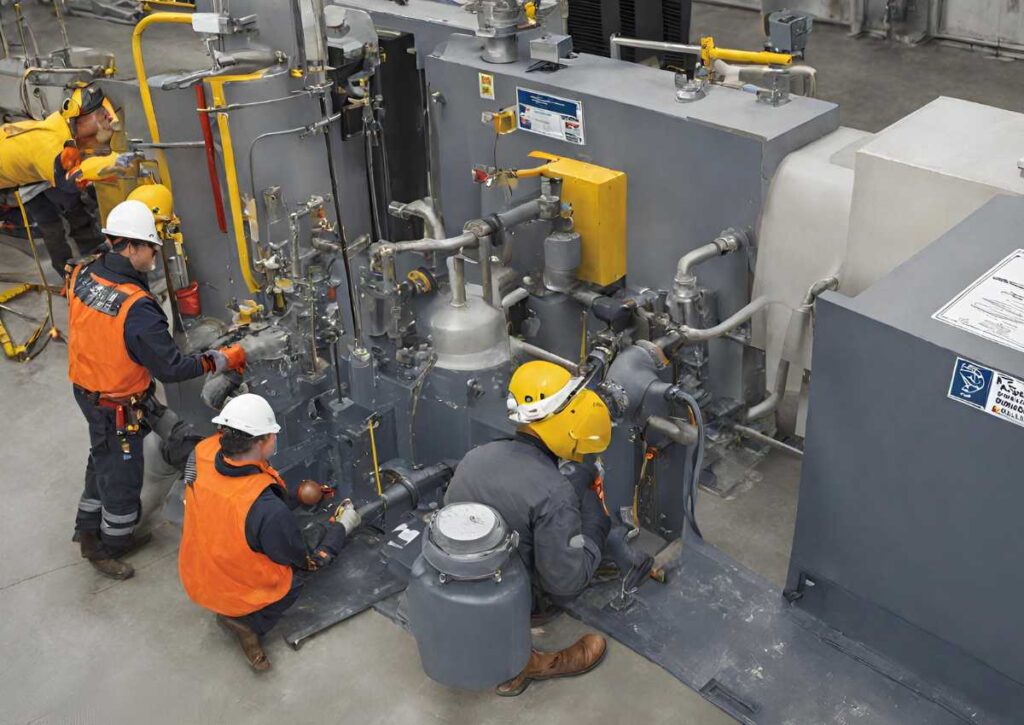Have you ever found yourself curious about the mechanisms powering oil drilling operations? If so, you may have pondered the significance of a “string drill.”
A connected assembly of drill pipes and tools crucial for transmitting force, rotation, and fluids in oil and gas drilling, enabling resource extraction from underground.
In the realm of oil and gas exploration, the drill string is a critical element, acting as the conduit for transmitting drilling force and torque from the surface rig to the drill bit deep below the Earth’s surface.
Understanding the String Drill Components

Drill Pipe
At the forefront of the drill string, the drill pipe is a robust tubular section designed to circulate drilling fluid from the surface to the drill bit and back.
Constructed from high-strength steel, the drill pipe withstands substantial stress, playing a pivotal role in the drilling process.
Drill Collars
Directly beneath the drill pipe, heavy cylindrical drill collars contribute weight to the drill bit, ensuring effective penetration of rock formations.
Crafted from solid steel bars, drill collars endure bending and torsional stress with resilience.
Heavyweight Drill Pipe
Positioned between the drill pipe and collars, the heavyweight drill pipe combines properties of both, offering a balanced transition of weight.
This minimizes the risk of buckling, enhancing the stability of the drill string during operations.
Joints and Connections
Crucial interfaces between drill pipe segments and other components, precisely machined threaded connections, are coated with lubricant to prevent friction-related issues.
Secure connections are vital to withstand the immense forces encountered during drilling.
Subs and Accessories
Intermediary components like subs facilitate connections between mismatched threads or sizes, while stabilizers and reamers aid in steering the drill bit and maintaining wellbore diameter.
Drill Bit
At the drill string’s lowermost end, the drill bit breaks and crushes rock formations.
Various designs cater to specific geological conditions, with pumped drilling fluid cooling and lubricating the bit while carrying cuttings to the surface.
The Dynamics of Drill String Operations

So, how does the drill string function during oil well drilling? The drill string transmits driving force from the surface rig to the drill bit through rotational motion.
Tubular in design, it allows drilling fluid to cool components and transfer rock cuttings to the surface.
Safeguarding Operations with Blowout Preventers

In drilling, blowout preventers (BOPs) are crucial for preventing potential kicks.
Installing a BOP above the drill string controls the flow of pressurized fluids, preventing uncontrollable wellbore blowouts.
Conclusion
In the intricate world of oil and gas exploration, the drill string stands tall as a backbone of drilling operations.
Each component, from the sturdy drill pipe to precisely threaded connections, contributes to the efficiency and success of the drilling process.
The interplay of these components, well-designed and meticulously maintained, ensures safe and productive drilling, underscoring the critical importance of the drill string in extracting valuable resources from beneath the earth’s surface.
FAQs
What is the primary purpose of a drill string in oil drilling?
The drill string serves as a conduit, transmitting drilling force, rotation, and fluids from the surface rig to the drill bit, enabling the extraction of resources from beneath the earth’s surface.
What components make up a typical drill string?
A drill string comprises drill pipes, drill collars, heavyweight drill pipes, joints, connections, subs, and accessories, each playing a vital role in the drilling process.
How do blowout preventers contribute to drill string safety?
Blowout preventers (BOPs) installed above the drill string control the flow of pressurized fluids, preventing uncontrollable wellbore blowouts during drilling operations.
What role do drill collars play in the drill string?
Drill collars, positioned below the drill pipe, add weight to the drill bit, ensuring effective penetration of rock formations during the drilling process.
Why is a transition pipe, such as a heavyweight drill pipe, included in a drill string?
Transition pipes like heavyweight drill pipe provide a balanced transition of weight between the upper drill pipe and lower drill collars, reducing the risk of buckling during drilling operations.









